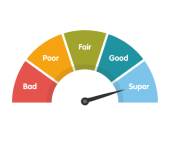Special Offers




Special Offers





What Is Cement?
Cement is a fine powder that is typically gray or white in color. It is made from a mixture of limestone, clay, shale, and other materials, which are heated to high temperatures in a kiln and then ground into a fine powder.
Cement is a crucial binding agent in construction, serving as the primary component in concrete. It's typically a fine powder made from limestone, clay, shale, or other materials, which is mixed with water to form a paste. As it hardens, cement binds aggregates, such as sand and gravel, creating a solid and durable building material.
Importance of Cement in Housing Construction
Cement is the backbone of home construction, as it forms the basis of concrete, the most widely used building material globally. Cement, when mixed with aggregates and water, creates a strong and durable substance that serves as the foundation for structures, including foundations, walls, and floors. Its crucial role lies in ensuring structural stability, reliability, and longevity, making it an essential component for safe and lasting homes. Cement's versatility and strength make it a cornerstone in the construction industry.
Choosing the Right Cement for Building Your Dream Home in India
Building your dream home in India is an exciting and significant undertaking. From selecting the perfect location to designing the layout and choosing the materials, every decision plays a crucial role in the construction process. One of the most critical choices you'll make is selecting the right type of cement for your project because choosing the right cement for building your dream home in India is a vital decision that impacts the durability and safety of your construction. By following these steps and seeking professional guidance, you can ensure that your choice aligns with your project's unique requirements, ensuring a strong and lasting foundation for your dream home.
In this blog, we will guide you through the process of choosing the right cement for constructing your dream home in India.
Step 1: Identify Your Project Needs
before diving into cement selection, it's essential to identify your specific project requirements:
Type of Construction: Determine whether you are building a residential house, a multi-story building, or any other structure.
Geographical Location: Consider the climate and environmental conditions in your region, as these can affect the type of cement needed.
Strength and Durability: Assess the load-bearing requirements and durability expectations for your construction.
Step 2: Understand the Types of Cement
India primarily uses Portland cement for construction, but there are several variations and specialty cements to consider:
Ordinary Portland Cement (OPC): OPC is the most commonly used cement in India and comes in various grades like OPC 33, OPC 43, and OPC 53, with increasing compressive strength.
Blended Cement: Blended cements contain additives like fly ash, slag, or silica fume, enhancing specific properties. Popular options include Portland Pozzolana Cement (PPC) and Portland Slag Cement (PSC).
Specialty Cements: These include sulfate-resistant cement for coastal areas, white cement for decorative finishes, and rapid-setting cement for fast-track projects.
Step 3: Determine the Right Cement for Your Home
For General Construction: If you're building walls, columns, and slabs, OPC 43 or OPC 53 is often suitable. These provide a good balance of strength and workability.
For Foundations and Harsh Environments: In areas with high moisture or chemical exposure, consider specialized cements like sulfate-resistant cement (SRC) or PSC.
For Decorative Finishes: If you desire a white or colored finish, opt for white cement or cement with pigments for decorative elements.
Step 4: Consider Quality and Brand
Quality is paramount in cement selection. Ensure you Buy cement from reputable manufacturers and suppliers with a track record of consistent quality.
Check for relevant certifications and standards compliance, such as ISI certification for Indian cement.
Step 5: Review Strength Requirements
Refer to the structural engineer's recommendations to determine the required compressive strength for your construction. Higher-grade cements like OPC 53 offer greater strength but may come at a higher cost.
Step 6: Storage and Handling
Proper storage and handling are crucial for cement's performance:
Store cement in a cool, dry place off the ground to prevent moisture absorption.
Use cement within its shelf life to maintain its strength.
Step 7: Budget Considerations
While quality is essential, be mindful of your budget. Compare prices from different suppliers and brands to ensure you're getting value for your money.
Step 8: Seek Expert Advice
Don't hesitate to consult with a structural engineer or architect. Their expertise can help you make an informed decision based on your specific project needs.
Step 9: Test Samples
if you're uncertain about the choice, conduct small-scale tests with different cement types to evaluate their performance in your local conditions.
FAQs
Q: What is the difference between OPC and PPC cement?
A1: OPC (Ordinary Portland Cement) is made primarily from clinker, whereas PPC (Portland Pozzolana Cement) is a blended cement that contains pozzolanic materials like fly ash. PPC is known for its enhanced durability and resistance to certain chemicals and is often used in construction in India.
Q2: How should cement be stored to maintain its quality?
A2: Cement should be stored in a cool, dry, and well-ventilated area, off the ground, on pallets or racks. Bags should be sealed tightly to prevent moisture absorption and contamination.
Q3: What is the typical shelf life of cement in India?
A3: The shelf life of cement is typically around three to six months. It's essential to use cement within this period for optimal quality.
Q4: How can I check if the cement I buy is of good quality?
A4: Look for BIS certification on the cement bags, which indicates that the product meets Indian quality standards. Additionally, buy cement from reputable suppliers with a history of delivering high-quality products.
Q5: What is the significance of the cement grade, such as OPC 43 and OPC 53?
A5: Cement grades like OPC 43 and OPC 53 indicate the minimum compressive strength of the cement after 28 days of curing. OPC 53 has higher strength compared to OPC 43, making it suitable for applications requiring higher structural strength.
Conclusion:
In the quest to build your dream home in India, cement choice stands as a cornerstone. The right cement ensures the structural integrity and longevity of your cherished abode. Understanding your needs, cement types, and quality factors is crucial. Whether opting for OPC, PPC, or specialty cements, quality should never be compromised. Trusted suppliers and proper storage are vital. Balancing budget and quality is a delicate art. Expert guidance can be invaluable. In conclusion, the cement you choose for your dream home in India is more than a building block; it's the foundation of your aspirations and a testament to your commitment to quality and durability.
Explore the key steps of Home Construction from concept to completion